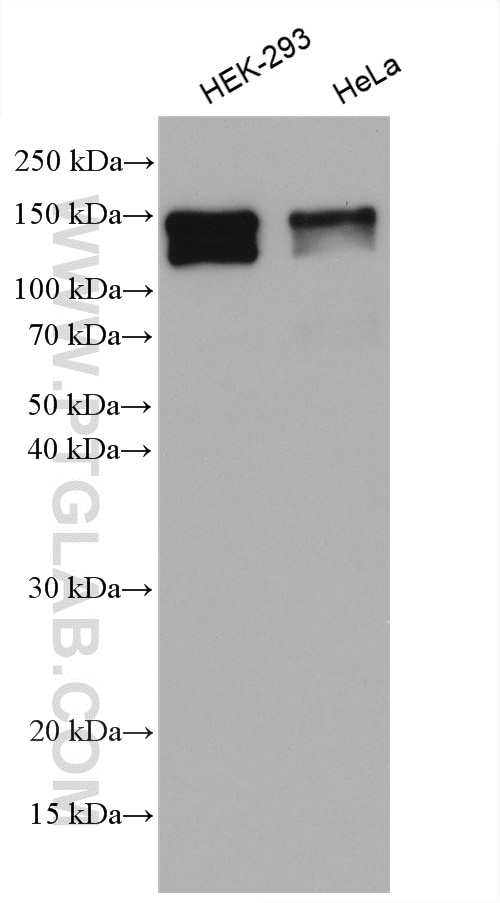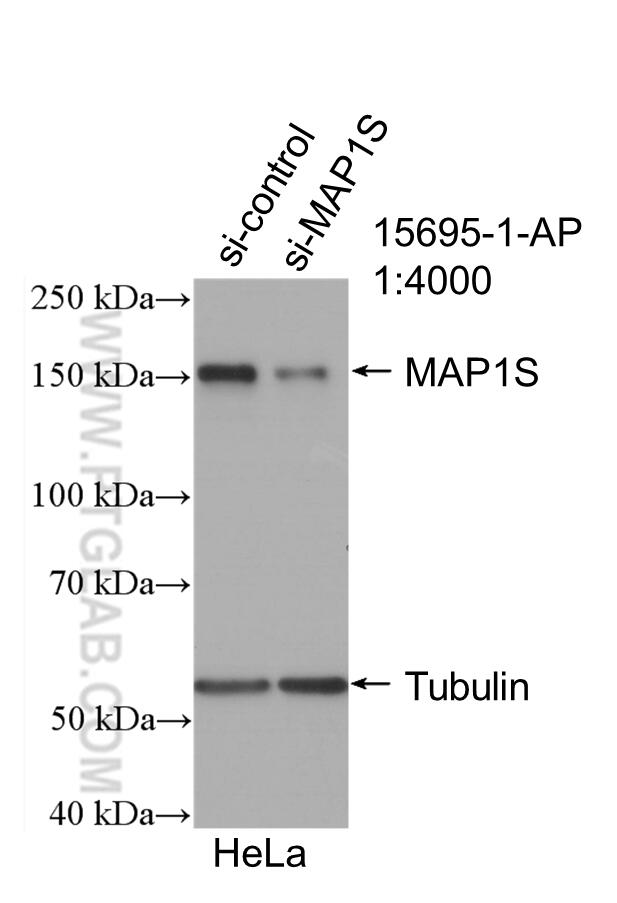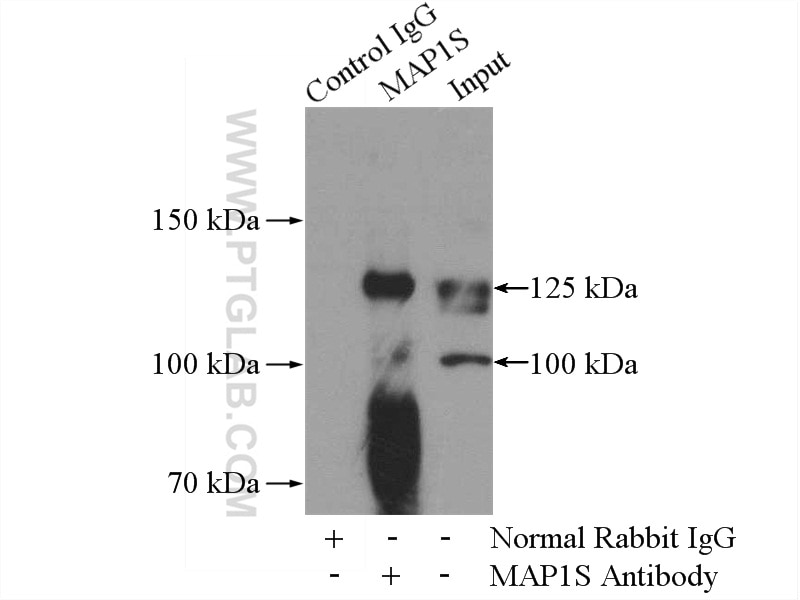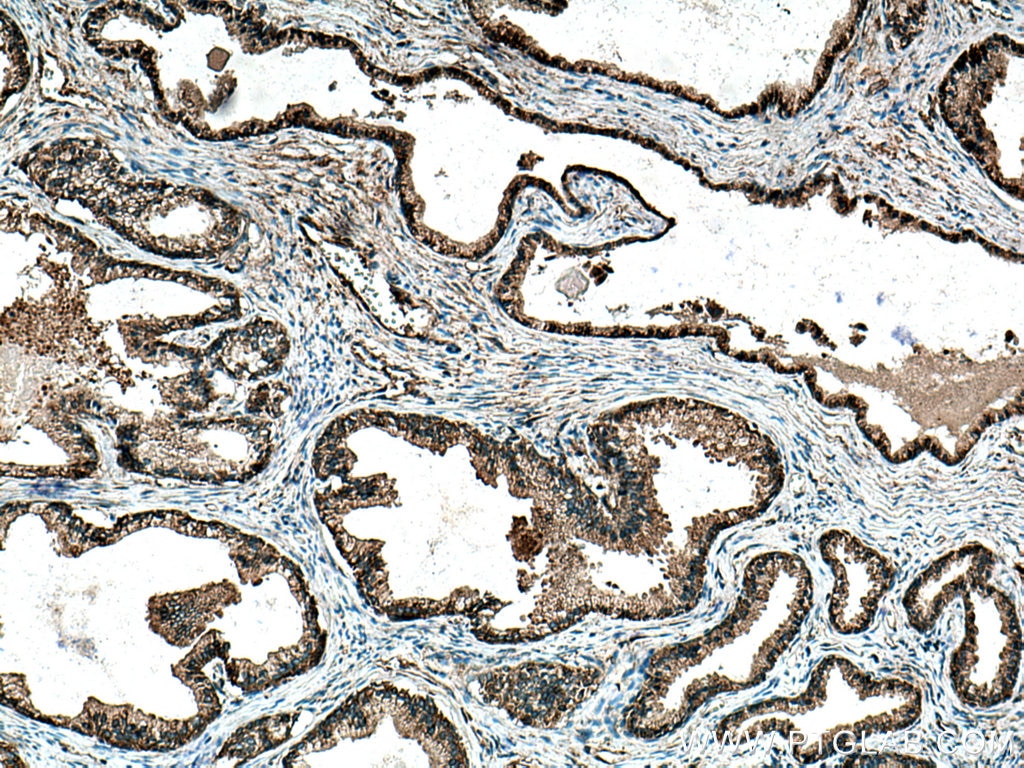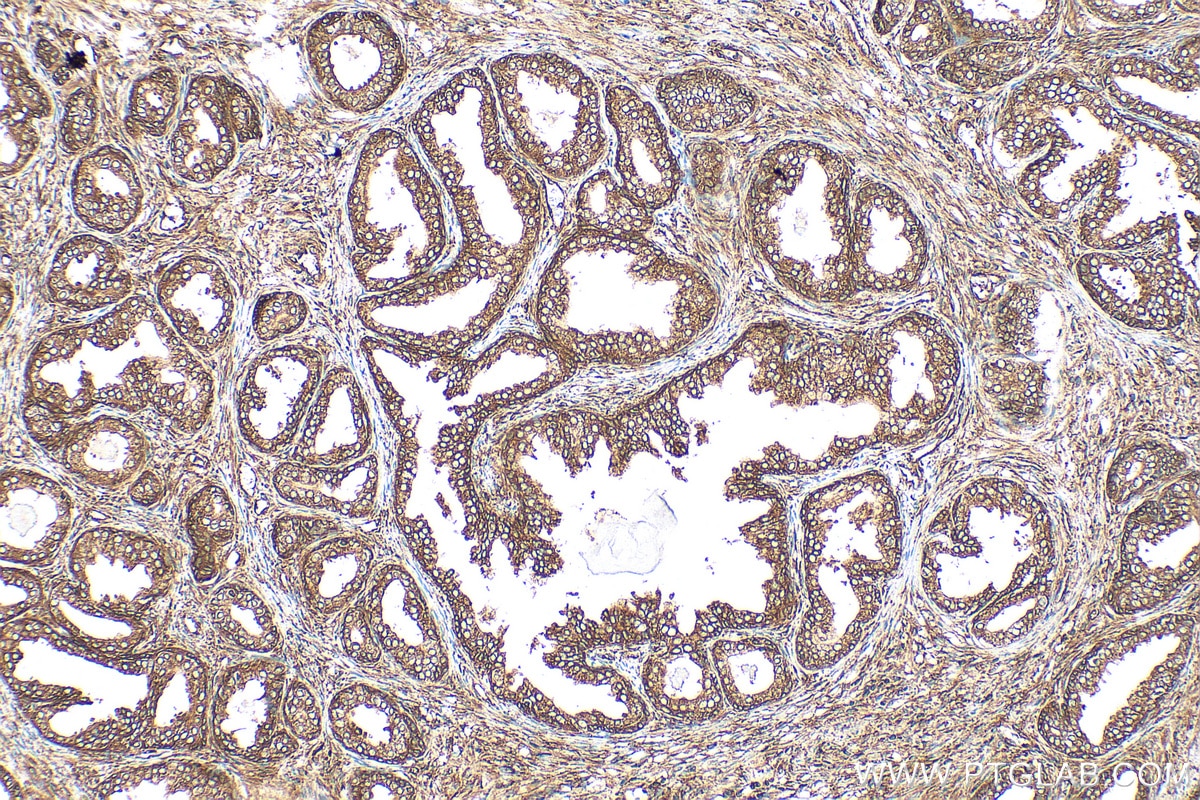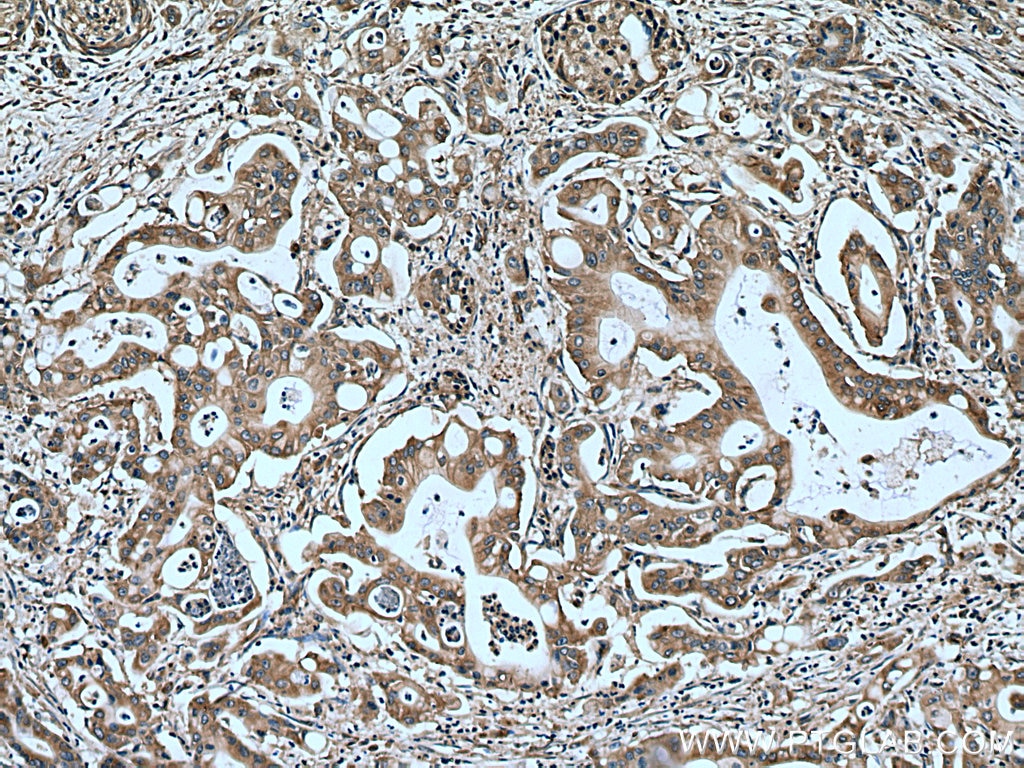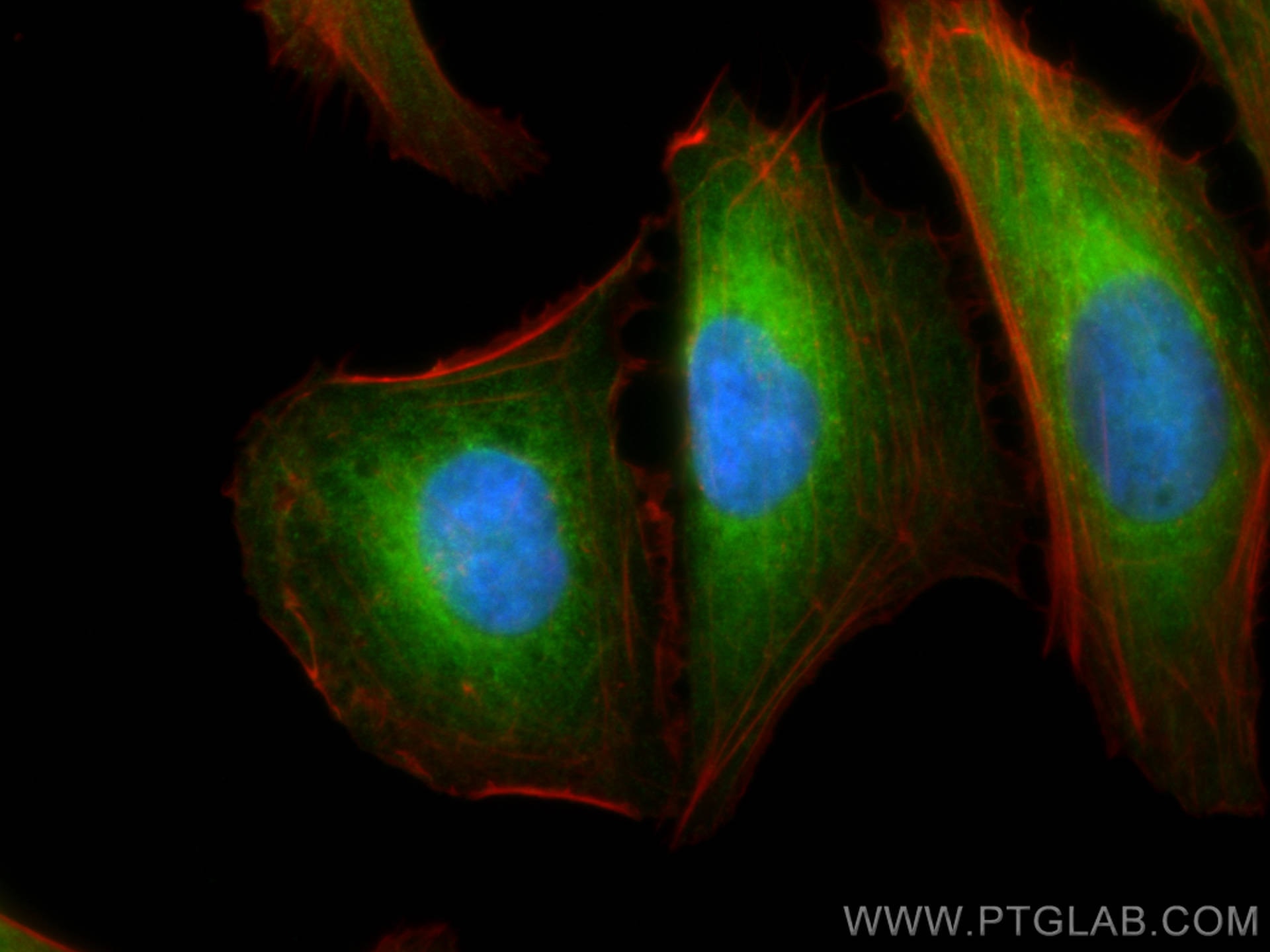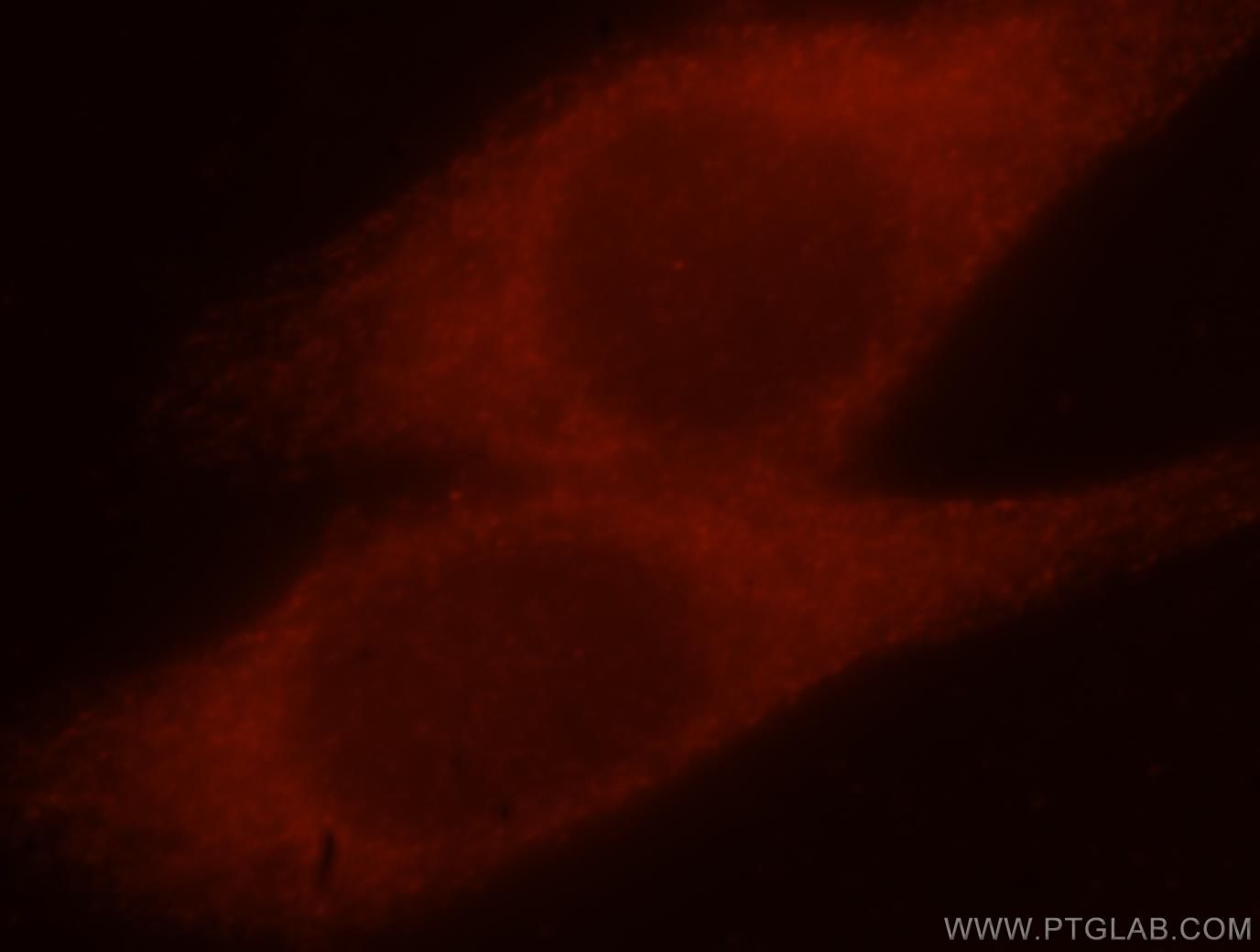- Featured Product
- KD/KO Validated
MAP1S Polyklonaler Antikörper
MAP1S Polyklonal Antikörper für WB, IHC, IF/ICC, IP, ELISA
Wirt / Isotyp
Kaninchen / IgG
Getestete Reaktivität
human und mehr (1)
Anwendung
WB, IHC, IF/ICC, IP, ELISA
Konjugation
Unkonjugiert
Kat-Nr. : 15695-1-AP
Synonyme
Geprüfte Anwendungen
| Erfolgreiche Detektion in WB | HeLa-Zellen, HEK-293-Zellen |
| Erfolgreiche IP | SH-SY5Y-Zellen |
| Erfolgreiche Detektion in IHC | humanes Prostatakarzinomgewebe, humanes Pankreaskarzinomgewebe Hinweis: Antigendemaskierung mit TE-Puffer pH 9,0 empfohlen. (*) Wahlweise kann die Antigendemaskierung auch mit Citratpuffer pH 6,0 erfolgen. |
| Erfolgreiche Detektion in IF/ICC | U2OS-Zellen, HeLa-Zellen |
Empfohlene Verdünnung
| Anwendung | Verdünnung |
|---|---|
| Western Blot (WB) | WB : 1:1000-1:8000 |
| Immunpräzipitation (IP) | IP : 0.5-4.0 ug for 1.0-3.0 mg of total protein lysate |
| Immunhistochemie (IHC) | IHC : 1:200-1:800 |
| Immunfluoreszenz (IF)/ICC | IF/ICC : 1:200-1:800 |
| It is recommended that this reagent should be titrated in each testing system to obtain optimal results. | |
| Sample-dependent, check data in validation data gallery | |
Veröffentlichte Anwendungen
| WB | See 5 publications below |
| IF | See 3 publications below |
| IP | See 1 publications below |
Produktinformation
15695-1-AP bindet in WB, IHC, IF/ICC, IP, ELISA MAP1S und zeigt Reaktivität mit human
| Getestete Reaktivität | human |
| In Publikationen genannte Reaktivität | human, Maus |
| Wirt / Isotyp | Kaninchen / IgG |
| Klonalität | Polyklonal |
| Typ | Antikörper |
| Immunogen | MAP1S fusion protein Ag8315 |
| Vollständiger Name | microtubule-associated protein 1S |
| Berechnetes Molekulargewicht | 806 aa, 85 kDa |
| Beobachtetes Molekulargewicht | 130-150 kDa |
| GenBank-Zugangsnummer | BC008806 |
| Gene symbol | MAP1S |
| Gene ID (NCBI) | 55201 |
| Konjugation | Unkonjugiert |
| Form | Liquid |
| Reinigungsmethode | Antigen-Affinitätsreinigung |
| Lagerungspuffer | PBS with 0.02% sodium azide and 50% glycerol |
| Lagerungsbedingungen | Bei -20°C lagern. Nach dem Versand ein Jahr lang stabil Aliquotieren ist bei -20oC Lagerung nicht notwendig. 20ul Größen enthalten 0,1% BSA. |
Hintergrundinformationen
MAP1S (also known as C19ORF5 or VCY2IP1) is a novel member of the microtubule-associated protein 1 family and a homologue of the exclusively neuronal distributed microtubule-associated protein 1A and 1B (MAP1A/B). In contrast to MAP1A and MAP1B, MAP1S is expressed in a wide range of tissues in addition to neurons. MAP1S is synthesized as a precursor protein that is partially cleaved into heavy and light chains in a tissue-specific manner. In addition, a short chain isoform may be induced under prolonged mitotic arrest or inhibition of the 26S proteasome. Recently it has been reported that the short chain isoform associates with mitochondria in addition to microtubules and causes irreversible aggregation of dysfunctional mitochondria resulting in cell death. Western blot analysis in human brain using this antibody detected two main bands between 100-130 kDa corresponding to heavy and light chains of MAP1S.
Protokolle
| PRODUKTSPEZIFISCHE PROTOKOLLE | |
|---|---|
| WB protocol for MAP1S antibody 15695-1-AP | Protokoll herunterladen |
| IHC protocol for MAP1S antibody 15695-1-AP | Protokoll herunterladenl |
| IF protocol for MAP1S antibody 15695-1-AP | Protokoll herunterladen |
| IP protocol for MAP1S antibody 15695-1-AP | Protokoll herunterladen |
| STANDARD-PROTOKOLLE | |
|---|---|
| Klicken Sie hier, um unsere Standardprotokolle anzuzeigen |
Publikationen
| Species | Application | Title |
|---|---|---|
Cell Res Regulators of tubulin polyglutamylation control nuclear shape and cilium disassembly by balancing microtubule and actin assembly. | ||
EMBO Rep MAP1B-LC1 prevents autophagosome formation by linking syntaxin 17 to microtubules. | ||
Cell Cycle Depletion of JMJD5 sensitizes tumor cells to microtubule-destabilizing agents by altering microtubule stability. | ||
Front Synaptic Neurosci Proteomic Analysis of Dendritic Filopodia-Rich Fraction Isolated by Telencephalin and Vitronectin Interaction. | ||
Biochim Biophys Acta Mol Cell Res Cryptic splicing events result in unexpected protein products from calpain-10 (CAPN10) cDNA | ||
Front Pharmacol Lipid droplets: a candidate new research field for epithelial ovarian cancer |
